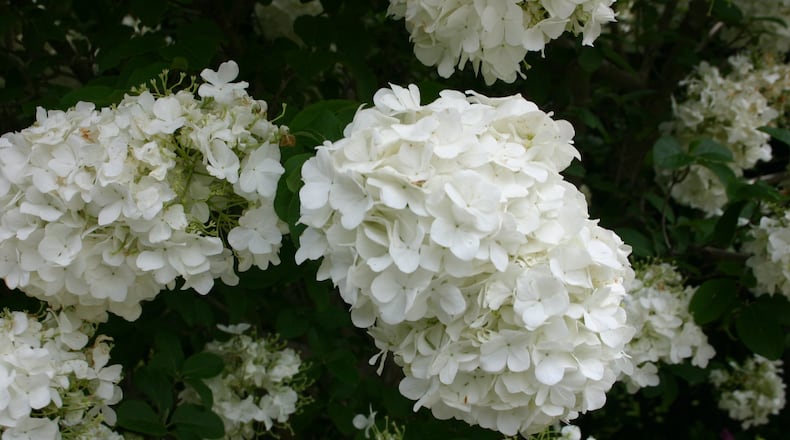Q: I have a wonderful snowball viburnum but never notice it producing berries. Do I need another viburnum species nearby for it to “berry up” for the birds?Melody Miller, McLean, Virginia
A: There are two flower forms of snowball viburnum. Viburnum macrocephalum, with the big white hydrangea-type flowers, is a sterile flower form. It does not make berries. On the other hand, there is a wild species of this viburnum that has small lacecap-type flowers. The scientific name is Viburnum macrocephalum f. keteleeri. The flowers of this plant are fertile, and plants from different parts of the country will pollinate each other. This results in red or black berries, which are reasonably attractive to birds.
Q: I have a solid slab foundation under my home. The roots of a tree near the house are growing toward my slab. What should I do?Lee Sutter, Acworth
A: I think the tree roots are not growing toward your slab, they are simply growing away from the tree. Tree roots grow toward places that offer moisture or nutrients or oxygen. Your slab has none of these. If the tree were growing extremely close to the slab, its roots might crack it due to the normal swaying of the tree lifting the roots. But if your tree is several feet away, the roots won't harm the slab because they won't grow underneath it.
Q: I just bought a large tow-behind sprayer. I would like to use it to apply liquid to my 1-acre lawn. What's the least expensive fertilizer to use?Cullen Caldwell, Cartersville
A: The best product for your situation is one of the granular products designed for use on lawns. Liquid fertilizer is a bad idea because it is used immediately, with nothing left to nourish the grass for several weeks until the next feeding. Lawn fertilizer is manufactured to release nutrients gradually over several weeks. This is best for good lawn health.
Q: I saw a kingsnake next to a big pile of wood chip mulch. If it is a female and has laid eggs in the pile, are the eggs protected by law like the snake is?Steve Binion, Brookhaven
A: Jason Clark at Southeastern Reptile Rescue (SnakesAreUs.com) says that unless the area is specifically protected under Georgia law, there's nothing that prevents disturbing or destroying wildlife habitat. Cottonmouths, copperheads and rattlesnakes all give birth to live babies, so you won't see eggs of a poisonous snake.
Consider yourself a lucky gardener to have a kingsnake on your property. It is true that they can lay eggs in a wood chip or compost pile, but since kingsnakes are nonvenomous, you don’t need to worry about being bitten. If you find eggs when shoveling your wood chips, just leave them where they are. The eggs will hatch in 55 to 75 days, depending on the weather. The young kingsnakes will disperse from the pile after hatching, and you will not likely see them again.
Listen to Walter Reeves Saturday mornings on News 95.5 FM and AM750 WSB. Visit his website, www.walterreeves.com, follow him on Twitter @walterreeves, on Pinterest, or join his Facebook Fan Page at bit.ly/georgiagardener for more garden tips.
About the Author
The Latest
Featured

